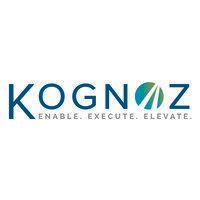Social Capital: A Strategic Resource For Leadership

Researchers on social capital have long debated it’s efficacy as a way of establishing norms in groups and communities or as a resource that can be accessed by organisations to sustain their competitive advantage.
In this article, I subscribe to the resource view of social capital and present my case of how it can be leveraged to sustain competitive advantage.
The question: can we create such social capital leading to strategic competitive advantage?
Social capital is a multi-disciplinary concept, the roots of which can be traced in sociology, anthropology, and economics. Each discipline has viewed social capital differently, leading to multiple interpretations of what it means.
Researchers, primarily led by sociologists, held the view that social capital is normative in nature and is useful in studying ‘patterns of development’ in society. On the other hand, we have others (economists!) who view social capital as a resource and a mechanism by which individuals can ‘access information’ from the external environment and ‘process and distribute’ it within the organisation. It is this ability of social capital to provide access to new and real-time information that has the potential to act as a strategic competitive advantage.

I define social capital as ‘the strength of relationships that exist between employees, in a team, department or business unit’. Social capital lies in the relationships and networks held by the employees. These relationships and networks can be internal or external to an organisation. When it is internal, it helps the individuals access various teams, coordinate their activities in a cohesive manner, making available resources and information from various parts of the organisation leading to a structured pursuit of organisational objectives. This makes the teams more effective and creates solutions that are comprehensive in addressing the business problems.
The same social capital, in the external context, enables individuals to tap into information from the external business environment on an almost real time basis. Individuals with a strong external network can access information in the form of competitor’s actions, technological developments, policy changes, regulatory expectations and prepare the organisation to deal with them.
The answer, fortunately, is yes, though these are still emerging practices. A few of them are listed below:
Accessing external information and taking organisation-wide decisions are particularly useful for the top management in any organisation. With this, they can achieve both speed and quality by processing real-time information. Top management teams having diversity in the form of external social networks provides organisations with the advantage of tapping into various types of information. Such information needs to be diffused within the organisation in a structured manner, creating effective management and response to changes in the business environment.
Many organisations have roles that are external-facing, responsible for studying market developments. This becomes an effective proposition for organisations only when such positions are staffed with individuals who have a large and wide external network. This will enable the person (and organisation) to tap into a wide range of information.
The question: can we create such social capital leading to strategic competitive advantage?
The answer, fortunately, is yes, though these are still emerging practices. A few of them are listed below:
1. Connecting ‘connectors’ with ‘diffusers’
Identifying Connectors who can access a variety of ideas/ information and connect those that align with the organisation's purpose can be a valuable talent. When they interact with Diffusers, the ideas from the external environment are adopted and operationalized in the organisation.
2. Citizenship behavior and engagement
The informal networks of employees are based on trust and a common purpose which binds members in the network. This common bonding encourages employees to go beyond their formally defined role requirement, demonstrate citizenship behaviour and support each other in achievement of common goals.
3. Creating work practices triggering social capital
Identifying communities with a common purpose and formalising them leads to effective engagement of the community members. Leveraging communities in structured problem solving for organisation leads to continuous improvement and faster resolution of critical issues.
4. Creation of intellectual capital
Employees’ informal networks access the required information to achieve their goals. They are connected by a common purpose which allows them to combine and exchange required information in a unique manner. Facilitating this combination and exchange leads to creation of intellectual capital at the team level.
So, how is your organisation harnessing social capital as a strategic resource?

Leadership





